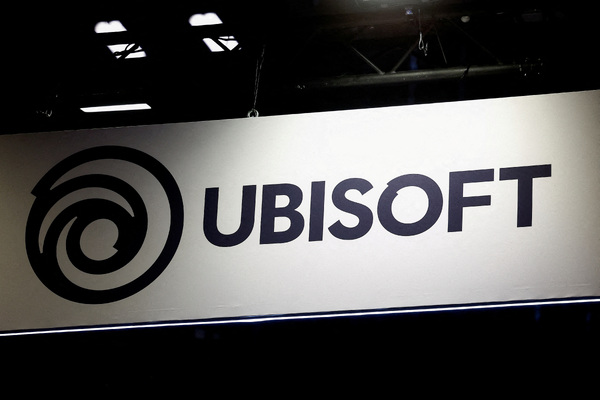Three steps to success with modernisation

Milan Bhatt at Hexaware outlines the steps that organisations must take to modernise their existing legacy infrastructure
In today’s cloud-first and mobile-centric world, organisations encumbered with legacy technology are in danger of falling behind.
While the current economic climate may tempt some CIOs to pause their modernisation efforts and focus on short term efficiency gains, they would be unwise to do so.
Growth-oriented businesses know that this is exactly the time to be investing in ways to get closer to their customers, futureproof their operations and drive lasting agility. That’s the surest way to exit the current downturn in even better shape than before.
However, IT modernisation projects can be complex and resource intensive, so careful planning and a well thought out strategy are essential to success.
Growing pressure from all sides
Consumers are more digitally savvy than ever before thanks to the increased exposure to everything from e-commerce to home working apps and even remote healthcare during the pandemic.
As a result, they’re also more demanding and have higher expectations of the digital experiences they receive. Adapting quickly to keep pace with these changing demands is key to business success in 2023.
For many organisations, that means they need to modernise the legacy systems they’ve relied on for decades, which have become a roadblock to agility.
However, investing in modernisation initiatives is challenging during times of increased economic pressure. Gartner found that CIOs in EMEA expect their budgets to increase by 4.4% on average, much lower than the projected inflation rate. That will restrict their ability to increase investments in modernisation initiatives and add to the pressure to do more with less.
As CIOs seek a solution to this dilemma, it’s important to recognise that platforms built for the pre-cloud era are expensive to maintain, prone to issues that could lead to unexpected costs, and difficult to rapidly and frequently update with the capabilities needed to drive efficient growth.
As such, modernisation can ultimately lead to significant cost savings if it’s delivered successfully.
Building a foundation for modernisation
One of the main reasons modernisation projects fail and the costs of delivering them spirals, is that organisations don’t start out from a firm foundation.
In many cases, their legacy systems have been built up over decades, through a mix of organic growth and corporate acquisitions. This results in a mishmash of systems and applications that have been designed to meet varying standards and with different frameworks, which is difficult to untangle and modernise.
Many soon find they don’t have the skills or insight in house to overcome this complexity and follow modernisation initiatives through to the end.
This is one of many reasons why it’s vital to first find the right transformation partner – a trusted industry expert that can bring its domain knowledge to bear in planning and execution.
With the right partner on board, organisations must then develop a comprehensive IT modernisation plan. With so much complexity accrued over so many years, it can be difficult to know where to start. That’s why it pays to break things down into manageable steps.
The three steps to success
1. Mapping the IT environment
The first and perhaps most important step in any modernisation drive is to begin by mapping out the current IT environment, to understand how systems are built. This can be achieved most effectively by leveraging powerful and intuitive automated discovery tools that enable organisations to get an instant understanding of the technology stack.
Teams need visibility into all application layers and dependencies, with a high degree of granularity. The key is to use this process to identify and decide which applications need to be modernised, which ones can’t be updated from a technology perspective, and which are no longer in use and should therefore be decommissioned to reduce complexity and cost.
2. Identifying the potential for adding value
This flows neatly into the second stage of the journey: identifying the areas where modernisation would add genuine business value. It could be an updated software delivery lifecycle to accelerate time to market and enhance efficiency, or a migration to a modern database, empowering users to access business insights more easily to drive sustainable growth.
Organisations shouldn’t assume everything needs to be modernised. Instead, business use cases should be carefully mapped out to ensure any initiative is undertaken for the right reasons. IT modernisation can be time consuming and expensive, and this is not the time for vanity projects.
3. Automating transformation
The final step is to begin an accelerated transformation process driven once again by a high degree of automation using a platform-based approach.
In fact, automation is essential to any IT modernisation project. Legacy technology environments are so complex that tens of thousands of parameters may need to be updated, which is beyond human capability.
A platform-based approach helps to speed and streamline modernisation projects by providing a standardised and automated approach for all stages of the journey, from application decoupling to re-architecting, to refactoring and optimisation – all whilst minimising the risk of business disruption.
Embarking on the journey
If organisations can navigate these three steps successfully, they will have a firm foundation they can build on to accelerate their modernisation journeys. This will enable them to drive the operational excellence and enhanced customer experiences that are behind many of their digital transformation initiatives, putting them ahead of their competitors with a lasting advantage.
The stakes couldn’t be higher, and there is no time like the present to embark on the modernisation imperative.
Milan Bhatt is President & Global Head – Modernization & Healthcare & Insurance at Hexaware
Main image courtesy of iStockPhoto.com

Business Reporter Team
Most Viewed
Winston House, 3rd Floor, Units 306-309, 2-4 Dollis Park, London, N3 1HF
23-29 Hendon Lane, London, N3 1RT
020 8349 4363
© 2025, Lyonsdown Limited. Business Reporter® is a registered trademark of Lyonsdown Ltd. VAT registration number: 830519543





